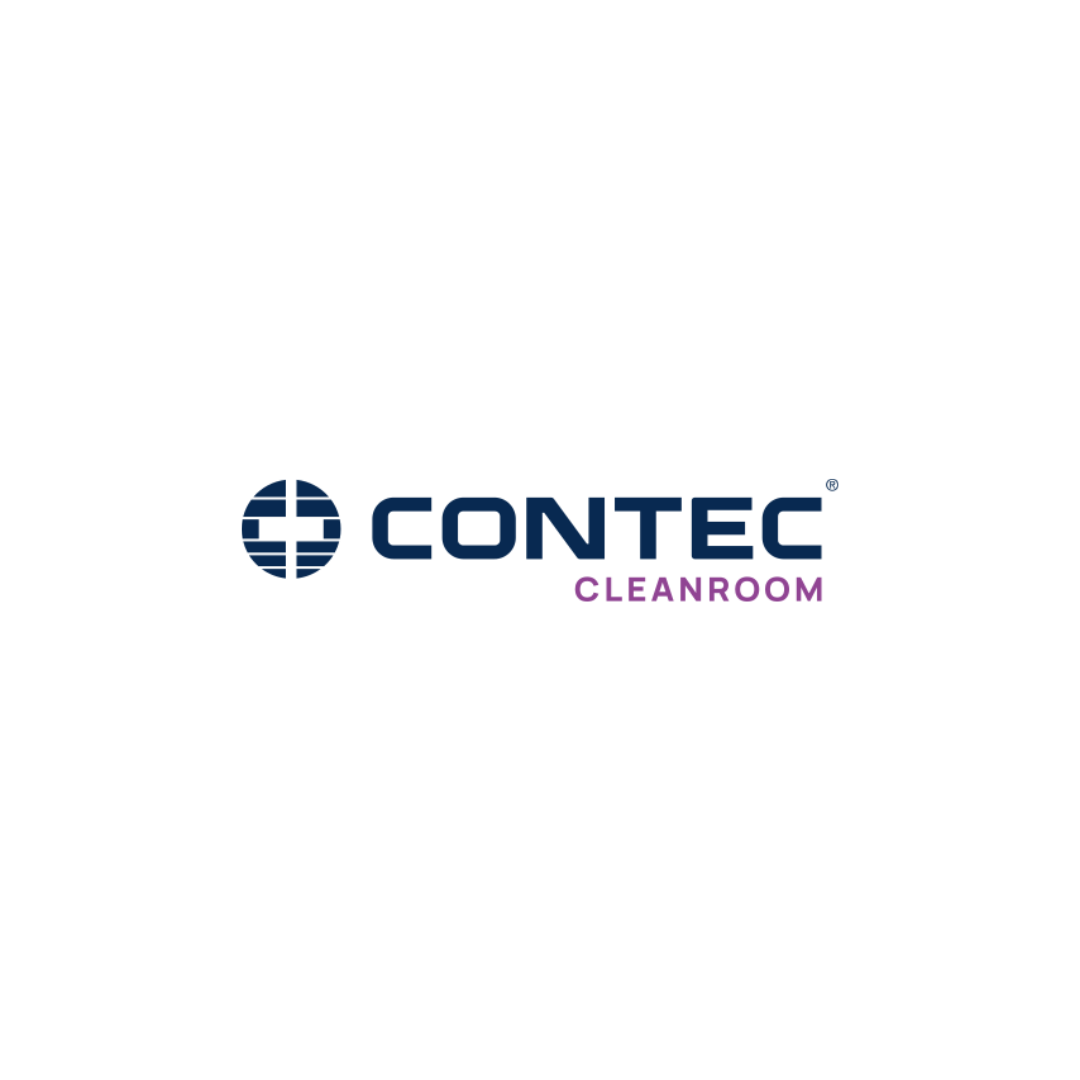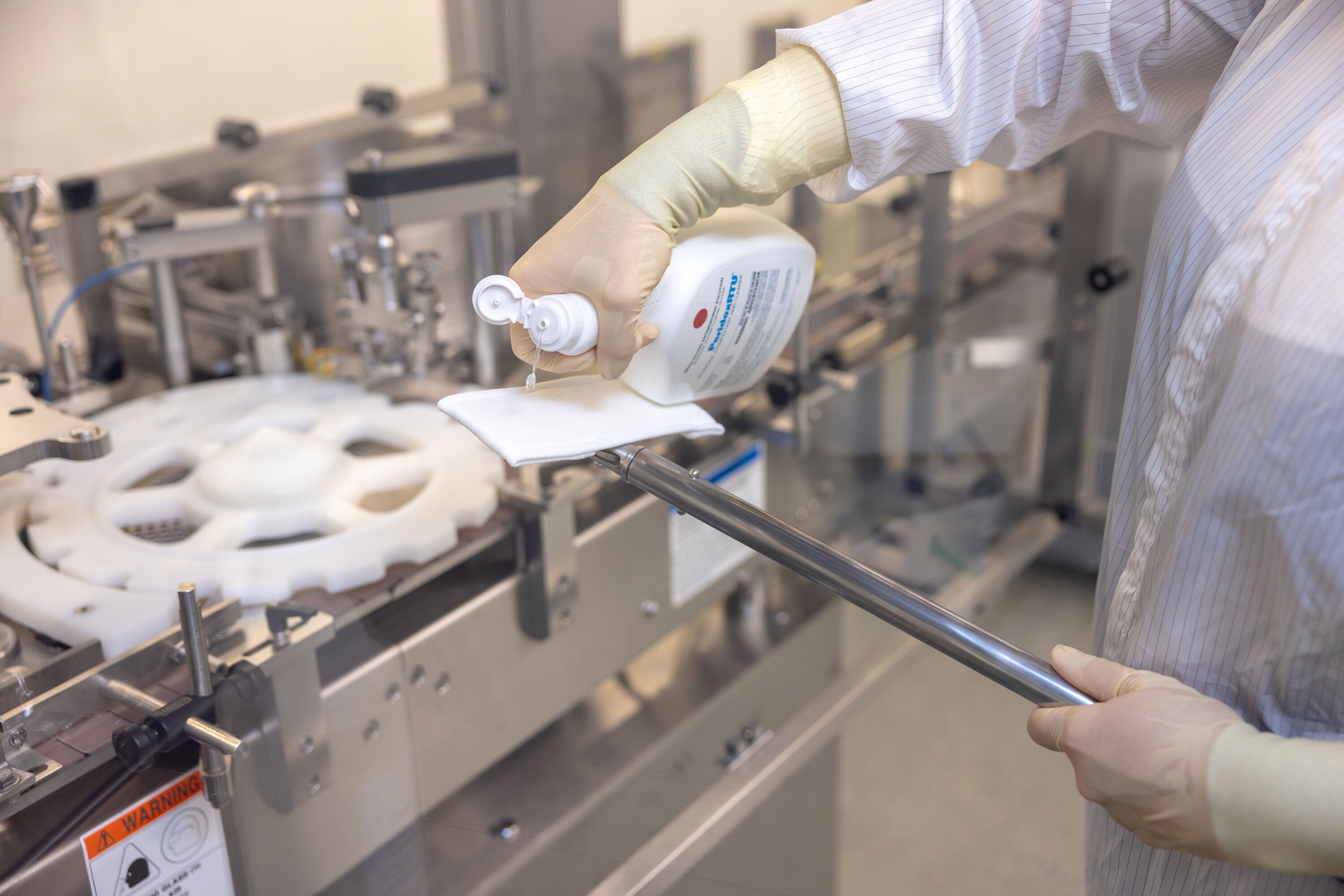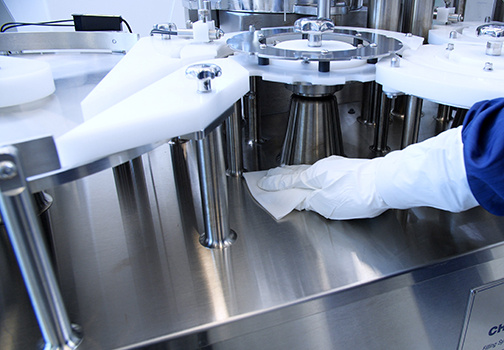In cleanroom environments, where maintaining a sterile atmosphere is crucial, effective cleaning and disinfection practices are not just routine tasks—they are critical to ensuring the safety and quality of pharmaceutical and biotechnological products. This blog explores the essential role that cleaning and disinfection play in developing and implementing your Contamination Control Strategy (CCS) and provides actionable insights for enhancing these practices in your facility.
Why Cleaning and Disinfection Are Essential
Cleanrooms are designed to minimize the introduction, generation, and retention of particles and microorganisms. However, the most meticulously designed facility can still be vulnerable to contamination without rigorous cleaning and disinfection protocols. Cleaning removes physical dirt and organic material from surfaces, while disinfection kills or inactivates microorganisms that may be present. Together, these processes are fundamental to maintaining the integrity of the controlled environment.
Key Components of an Effective Cleaning and Disinfection Program
-
- Disinfectant Selection and Validation
Choosing the right disinfectants is the first step in building an effective cleaning and disinfection program. Disinfectants should be selected based on their efficacy against the specific contaminants identified in your cleanroom, as well as their material compatibility and safety for personnel.
Beyond selection, validating the efficacy of these disinfectants is crucial. This involves testing them under the actual conditions of your cleanroom, including the types of surfaces and microorganisms present. The validation process also helps establish the necessary contact time for each disinfectant to be effective. - The Importance of Disinfectant Rotation
Disinfectant rotation refers to the practice of using different types of disinfectants on a scheduled basis to control contamination in the cleanroom. A typical rotation usually includes a daily-use disinfectant and a periodic sporicidal agent.
Regulation points this out:
FDA Aseptic Processing Guide
“Many common disinfectants are ineffective against spores. For example, 70 percent isopropyl alcohol is ineffective against Bacillus spp. Spores. Therefore, a sound disinfectant program also includes a sporicidal agent, used in according to a written schedule and when environmental data suggest the presence.”
European Union (EU) Annex I- Manufacture of Sterile Products
“More than one type of disinfecting agent should be employed to ensure that where they have different modes of action, and their combined usage is effective against bacteria and fungi. Disinfection should include the periodic use of a sporicide.”
United States Pharmacopeia (USP) <1072>
“The development of microbial resistance to antibiotics is a well-described phenomenon. The development of microbial resistance to disinfectants is less likely to occur at significant levels, as disinfectants are more powerful biocidal agents than antibiotics.”
“It is prudent to augment the daily use of a bacterial disinfectant with weekly/monthly use of a sporidical agent.”
Parenteral Drug Association’s (PDA) Technical Report (TR) 70 – guidance document
“Concerns for the possible resistance of organisms to these products are based on a theoretical relationship to resistance found with antibiotics. To date, there is no conclusive published test data proving such development of resistance by organisms to these agents.”
“Because of this, the pharmaceutical and biotechnology industries have moved away from the rotation of two disinfecting agents. This formally common practices led to high residue levels and subordinate efficacy performance. Today, most firms use a system whereby a disinfectant is rotated with a sporicide to more efficiently reduce bioburden levels. The rotation of a disinfectant with a sporicide is superior to the rotation of multiple disinfectants.
The thought is that using more than one disinfectant will cover the large range of potential contamination. The disinfectant rotation frequency should be based on the historical EM data trending over time and the disinfectants' efficacy profile. Disinfectants are used routinely, and a sporicidal agent is used periodically. - Personnel Training and Gowning
The human factor is often the most significant source of contamination in cleanrooms. Therefore, thorough training in proper cleaning, disinfection, and gowning procedures is essential. Operators should understand the basics of microbiology and the critical role they play in contamination control. This knowledge empowers them to take ownership of their responsibilities, leading to more consistent and effective execution of cleaning protocols. - Process Design for Optimal Cleaning Efficiency
A well-designed cleaning process is integral to contamination control. The process should be structured to minimize the risk of cross-contamination, typically starting in the cleanest areas and moving toward the dirtiest. In facilities where operators have experienced issues such as slip-and-fall incidents due to improper cleaning sequences or residue buildup, a reevaluation of the cleaning process may be necessary. Implementing changes such as using pre-saturated wipes, adjusting the flow of cleaning operations, or introducing mechanical cleaning methods can significantly enhance safety and efficacy.
- Disinfectant Selection and Validation
Learn More About Effective Cleaning and Disinfection With Our On-Demand Webinar.
Residue Management: Avoiding Common Pitfalls
One of the challenges in maintaining an effective cleaning and disinfection program is managing residues left behind by disinfectants. Residues can accumulate on surfaces, leading to corrosion, material degradation, and even interference with the effectiveness of the disinfectants themselves. Regular residue removal is essential to prevent these issues. This can be achieved by incorporating residue management into your cleaning protocol, using appropriate detergents, and following up with sterile water or IPA wipes as needed. All disinfectants leave residues, so it is important to understand the nature of the residue on the different surfaces in your cleanroom.
Because, in some cases, residues can become a significant problem if not addressed promptly. For instance, facilities that overuse sporicidal agents without adequate residue removal may experience equipment rust, floor damage, and other material compatibility issues. Implementing a balanced cleaning regimen that includes regular residue removal can prevent these problems and ensure the long-term integrity of your cleanroom.
Challenges and Solutions in Disinfectant Application
Applying disinfectants effectively is another critical aspect of an effective contamination control strategy. Challenges can arise from the physical layout of the cleanroom, including hard-to-reach areas or equipment with complex geometries. Ensuring that all surfaces are adequately covered requires the use of appropriate tools, such as mops designed for cleanroom use, and a well-defined application procedure.
Training personnel to follow these procedures is equally important. Discrepancies between written SOPs and actual cleaning practices can lead to non-compliance and increase the risk of contamination. Regular training and monitoring help ensure that personnel adhere to the established protocols and maintain the integrity of the cleanroom environment.
For more information on cleanroom disinfection, view our blog.
Conclusion
Cleaning and disinfection are the cornerstones of a robust Contamination Control Strategy. By prioritizing these activities and integrating them into a well-thought-out CCS, cleanroom facilities can maintain the highest standards of product safety and quality. Continuous improvement, driven by regular training, process evaluation, and residue management, is essential to keeping contamination at bay and ensuring that cleanroom operations meet both regulatory requirements and internal standards. Remember, in cleanroom management, the effectiveness of your contamination control measures is directly tied to the diligence with which you implement and maintain your cleaning and disinfection protocols.
Contact a sales representative for more information on Contec Cleanroom products and how they can enhance your cleanroom cleaning procedures.

.jpg)



